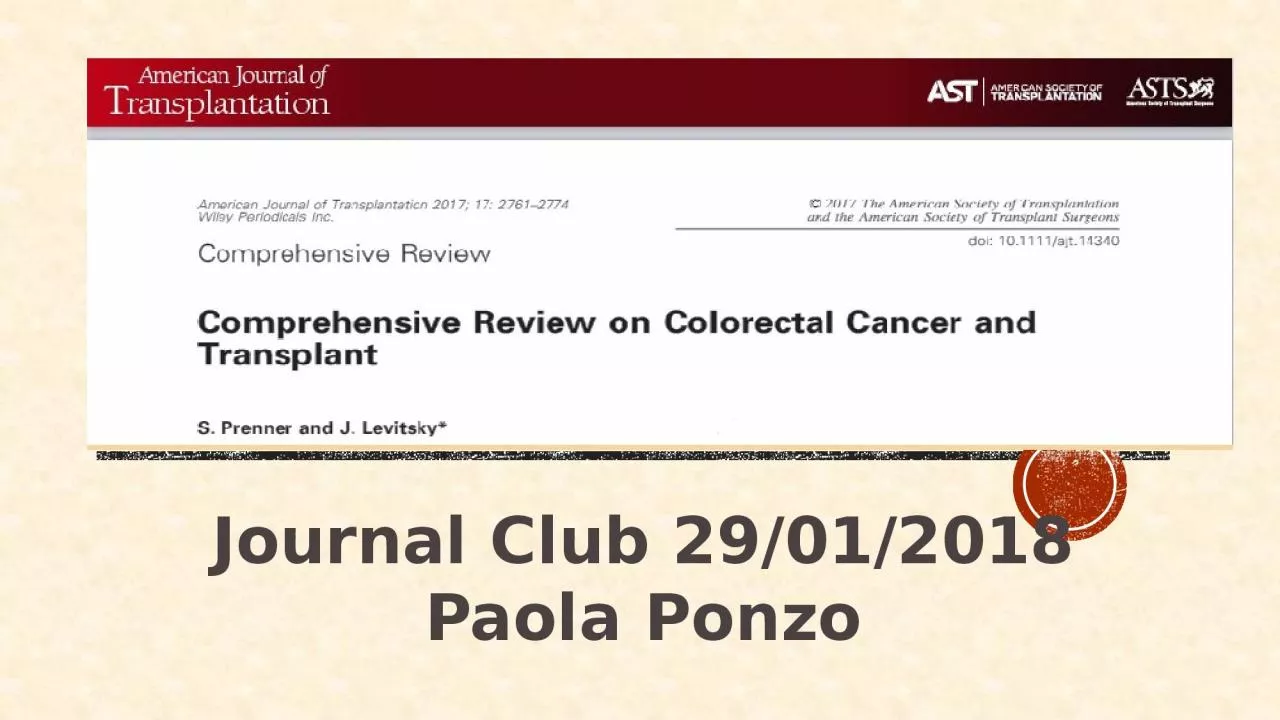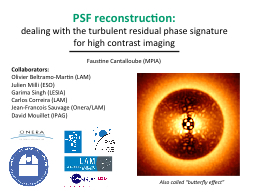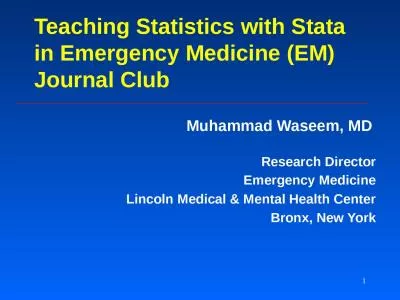PPT-Journal Club 29/01/2018 Paola Ponzo
Author : KittyCat | Published Date : 2022-07-27
Background CRC fourth most common cancer worldwide Background Malignancy is one of the leading cause of death in SOT recipients CRC from no association
Presentation Embed Code
Download Presentation
Download Presentation The PPT/PDF document "Journal Club 29/01/2018 Paola Ponzo" is the property of its rightful owner. Permission is granted to download and print the materials on this website for personal, non-commercial use only, and to display it on your personal computer provided you do not modify the materials and that you retain all copyright notices contained in the materials. By downloading content from our website, you accept the terms of this agreement.
Journal Club 29/01/2018 Paola Ponzo: Transcript
Download Rules Of Document
"Journal Club 29/01/2018 Paola Ponzo"The content belongs to its owner. You may download and print it for personal use, without modification, and keep all copyright notices. By downloading, you agree to these terms.
Related Documents














